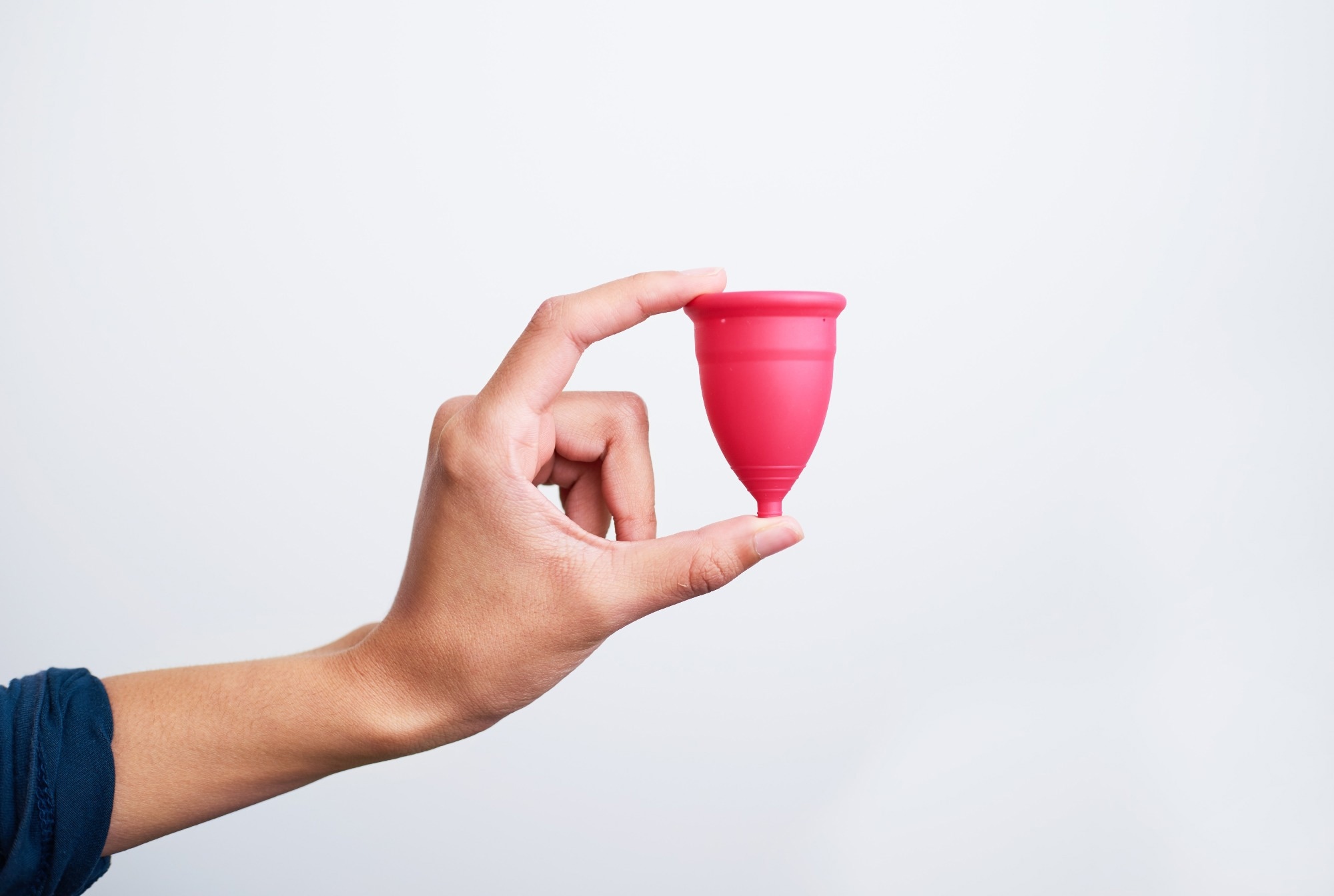A self-cleaning menstrual cup absorbs more and spills less with a seaweed-based upgrade.
 Image Credit: Meeko Media/Shutterstock.com
Image Credit: Meeko Media/Shutterstock.com
Researchers at McMaster University have developed a self-cleaning menstrual cup coated in silicone oil and paired with a flushable, plant-based absorbent tablet that prevents spillage. The study was recently published in ACS Applied Materials & Interfaces.
Menstrual health remains a major challenge for many women and girls, especially in low- and middle-income countries where limited access to safe products affects education, work, and social inclusion. Menstrual cups can provide a sustainable, cost-effective, and reusable alternative to pads and tampons, reducing waste and health risks.
However, their adoption is slowed by hygiene concerns, difficulties in use, and cultural stigma. Despite their potential to improve menstrual care and women’s well-being globally, progress in promoting menstrual cups and advancing menstrual health solutions has been limited due to social taboos and insufficient attention to user needs and design improvements.
The Study
In this work, researchers from McMaster University developed a self-cleaning menstrual cup featuring a silicone oil-infused biocompatible coating combined with a plant-based biodegradable tablet consisting of superabsorbent fibers. They designed the absorbent fibers using cross-linked alginate and optimized those fibers to realize high absorption capacities.
The researchers aimed to address hygiene and usability concerns while laying the groundwork for future innovations in menstrual health technologies. Researchers developed flexible, porous superabsorbent fibers using alginate, a natural polymer from brown algae known for its biocompatibility and safety. By crosslinking alginate with calcium ions, they enhanced its ability to absorb fluids and support blood clotting.
The novel menstrual health product was designed to enhance the Bfree Cup, a safer and more sustainable menstrual cup. The researchers have improved the cup with a a flushable, seaweed-based absorbent tablet that holds menstrual blood and prevents spills during removal, addressing a major usability concern.
The Bfree Cup itself is made from lubricant-infused silicone that repels bacteria and viruses, eliminating the need for boiling between uses.
The researchers used several materials to develop and test the product, including sodium alginate (a natural polymer from seaweed), calcium chloride (a salt used to crosslink the alginate), and phosphate-buffered saline (a solution that mimics the body’s natural fluids).
They also worked with Bfree silicone oil and two further menstrual cups: the Diva Cup (Cup #1), and the Flex Cup (Cup #2). To test bacterial resistance, they used two strains of Escherichia coli: BL21 and DH5α.
For blood-related tests, they used samples of human and rabbit plasma, including a version of rabbit plasma that had reduced levels of factor XII (a protein involved in blood clotting). Human whole blood was also collected from healthy volunteers using tubes containing sodium citrate, a compound that prevents clotting during testing.
The team created absorbent fibers using a wet spinning method, where the sodium alginate solution was turned into soft fibers by mixing it with calcium. Fibers were formed via extrusion through a fine needle into a calcium bath. They were then washed, dried, and tested.
To check the structure and confirm the calcium bonding, the fibers were examined with SEM and further characterized with FTIR spectroscopy. The swelling properties of the dried fibers were evaluated by comparing fiber weights before and after testing. Immediate absorption was assessed by adding distilled water dropwise and measuring the absorbed volume.
Long-term absorption was determined by placing one gram of fibers in the menstrual cups, adding 25 mL of water over four to six hours at a 0.1 mL/min flow rate using a syringe pump, and measuring both retained fibers and residual liquid. Absorption capacity was expressed as milliliters of liquid absorbed per gram of fiber (mL/g).
Significance of the Study
Lubricant-infused menstrual cups were found to prolong clotting times and exhibited self-cleaning properties, with minimal blood residue and reduced bacterial adhesion and biofilm formation.
Incorporating the seaweed-based tablets allowed the cups to absorb up to 15?mL/g of blood, matching the full cup capacity, preventing spillage, and improving the emptying process. The combination of superabsorbent fibers and silicone oil surface treatment significantly improved cup hygiene and user experience, and reduced biofouling, making menstrual cups comparable to pads and tampons in absorption and convenience.
This innovation improved practicality, ease of use, and safety, while offering a cost-effective, eco-friendly alternative to disposable menstrual products. The long-lasting cups had the potential to decrease environmental impact and increase access to menstrual care in lower-income communities.
Get all the details: Grab your PDF here!
Future Outlook
This new development could enhance menstrual hygiene, encourage wider adoption, and reduce period poverty. While the published study focused on materials and design innovations, the researchers have suggested that such technologies could form the basis for future diagnostic and wearable health applications.
Future menstrual products may incorporate sensors to detect early signs of illnesses, using menstrual blood as a biological resource. This broader vision, outlined in a separate institutional perspective, explores how biosensors, artificial intelligence, and wearable devices could eventually support proactive women’s health monitoring.
As co-lead researcher Tohid Didar notes in a related release, “We have mainly been reactive in terms of women’s health. This can give us an opportunity to start being proactive.”
Journal Reference
Moghimikandelousi, S. et al. (2025). Self-cleaning menstrual cups with plant-based biodegradable superabsorbent fibrous tablets for hygienic and sustainable Period Care. ACS Applied Materials & Interfaces. DOI: 10.1021/acsami.5c16140
Disclaimer: The views expressed here are those of the author expressed in their private capacity and do not necessarily represent the views of AZoM.com Limited T/A AZoNetwork the owner and operator of this website. This disclaimer forms part of the Terms and conditions of use of this website.